
Colombian Street Artist Erre began her career on the street in her home city of Zipaquirá as a teen but moved an hour’s drive south to the capital city Bogotá a few years ago to attend university and dive into the explosively growing scene on the streets there.
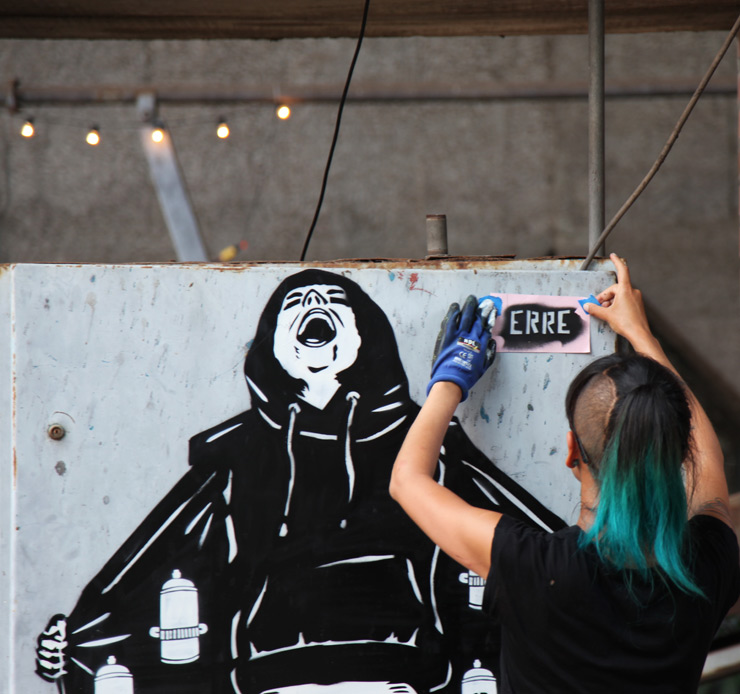
ERRE. Colombia. (photo © Jaime Rojo)
With nightly outings in the larger metropolis, she and some mates have used political themes of their punk-inspired graphic works to push social attitudes about corruption, hypocrisy, race and gender equality.
With strong female figures that shout confidence and rock and roll, you can see the ERRE is helping define the kind of heroines she admires who take and active role in making change.
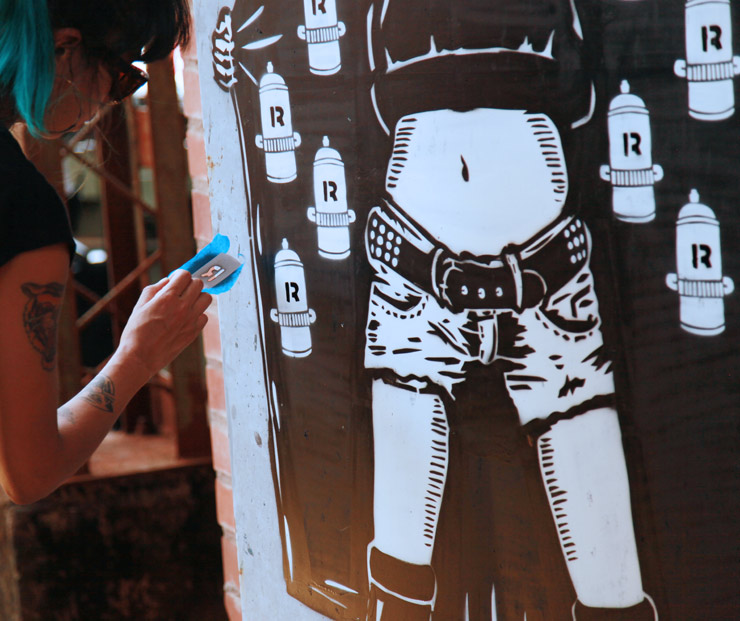
ERRE. Colombia. (photo © Jaime Rojo)
After assisting Toxicomano to complete his large mural for this project, Erre had some free time to hit up some prime spots of her own in this distillery. Sometimes she worked freehand, and other times she dug into the stencils that she typically leaves on the walls in Bogotá.
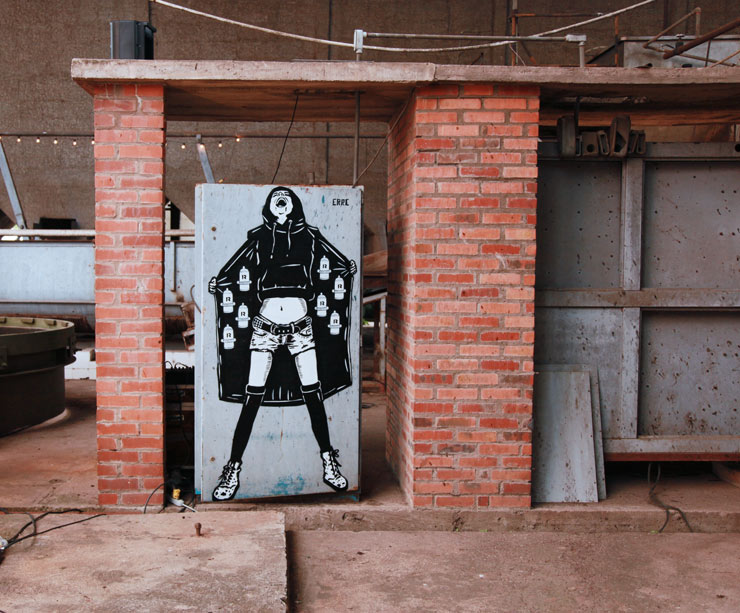
ERRE. Colombia. (photo © Jaime Rojo)
We asked her a few questions about her work.
Brooklyn Street Art: “Unete Al Disorden”. What does that mean?
Erre: “Join the chaos” – or something similar. I am inviting people to join in.
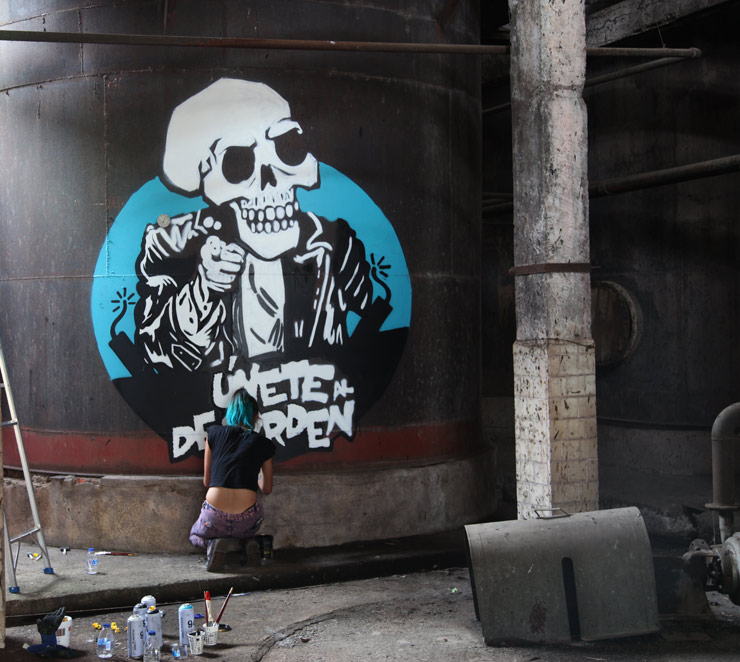
ERRE. Colombia. (photo © Jaime Rojo)
BSA: When did you begin making art for the street?
ERRE: My first stencil was about 10 years ago and I have done many stencils in my home city Zipaquirá.
About five years ago I decided I would begin painting for a living and I have dedicated myself to this work.
BSA: Do you always use stencils?
ERRE: I always paint with stencils but sometimes I make an exception and do a piece by hand
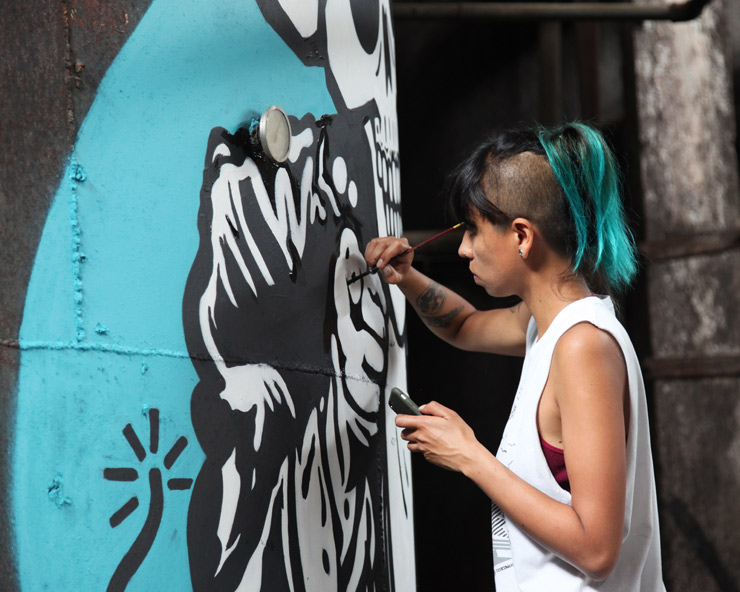
ERRE. Colombia. (photo © Jaime Rojo)
BSA: Can you talk about the stencil that you made here which appears to be a message of empowerment for women and girls?
ERRE: Yes for women in Colombia there is a big problem – really in all of Latin America – with the rights of women. They do not receive equal pay for equal work, they do not get enough respect. There is a strong culture of “machismo” that exists with the men all of the time. So a lot of my work is intended to empower women.
BSA: Where do you get inspiration for your style?
ERRE: I think I draw a lot of inspiration from cartoons and illustrations like that. I draw all of the designs in a smaller size with the computer I enlarge them for this work

ERRE. Colombia. (photo © Jaime Rojo)
BSA: You often have skulls in your pieces. Can you talk about the symbolism of using skulls for you?
ERRE: Yes I use the skulls as an human symbol because everyone has a skull inside you know? It’s a way for me to represent humans and people generally without referring to their race whether they are black, brown, yellow or white. It is sort of a universal symbol.
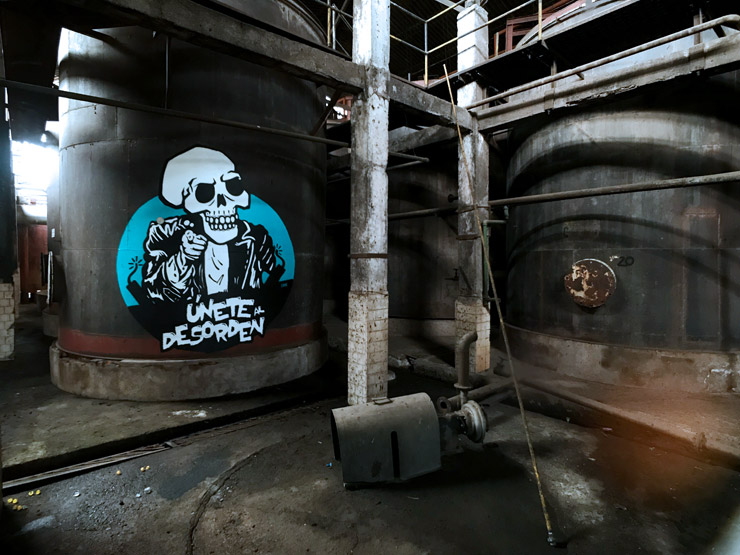
ERRE. Colombia. (photo © Jaime Rojo)
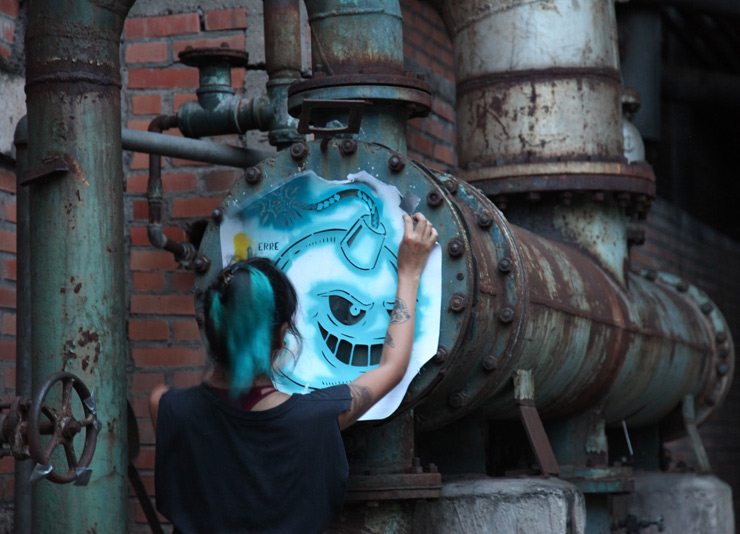
ERRE. Colombia. (photo © Jaime Rojo)

ERRE. Colombia. (photo © Jaime Rojo)
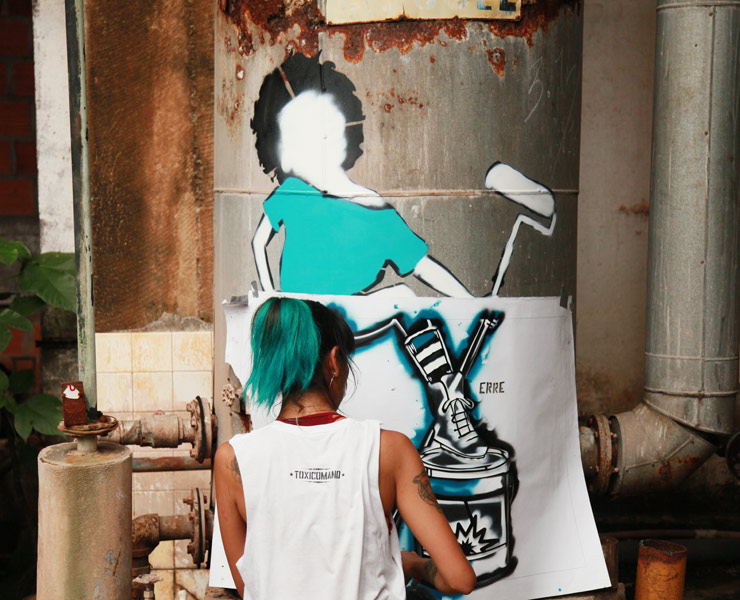
ERRE. Colombia. (photo © Jaime Rojo)
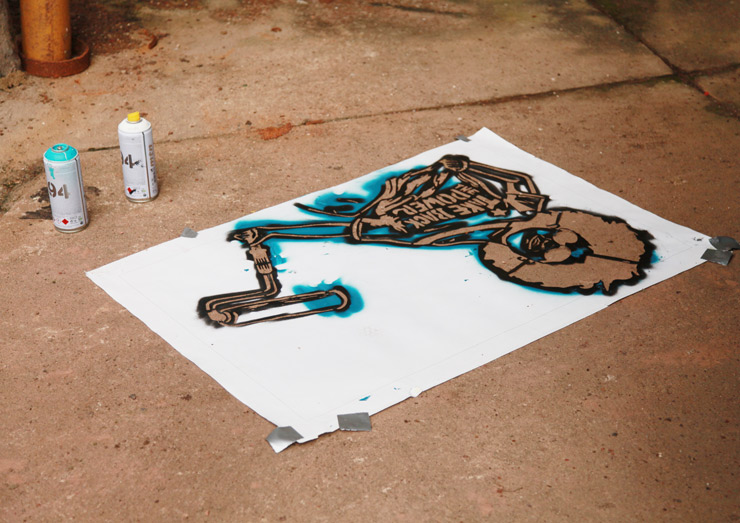
ERRE. Colombia. (photo © Jaime Rojo)
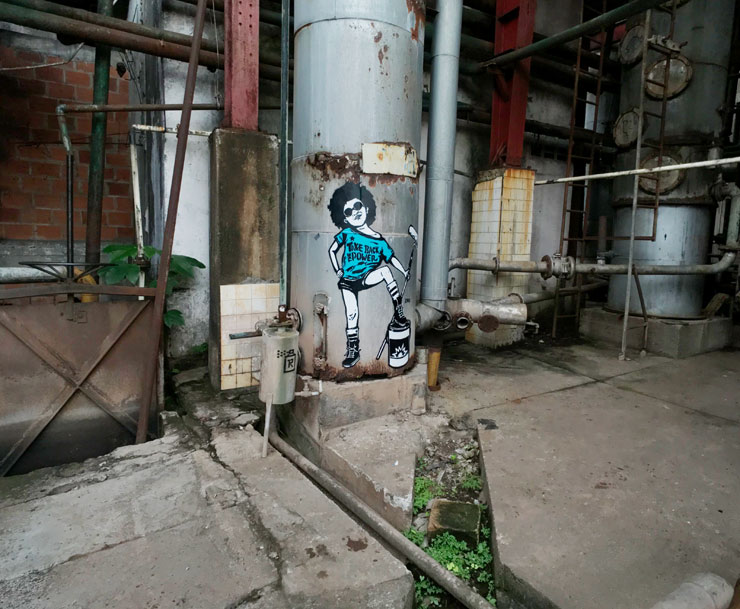
ERRE. Colombia. (photo © Jaime Rojo)
This event has been made possible by Dictador Art Masters Foundation. To learn more about the foundation click here.
Other Articles You May Like from BSA:
Remember when Charles Wallace couldn't taste the food offered by the man with the red eyes because he had completely shut his mind to him in Madeleine L'Engle’s A Wrinkle in Time? The food was made o...
Our weekly focus on the moving image and art in the streets. And other oddities. Now screening participants at Festival Asalto 2020: 1. SOFLES MIXTAPE Vol 1.2. SOFLES / FAST FORWARD3. Reisha ...
Spain's Second Largest City Hosts "Open Walls" A popular city for Street Art in the early-2000s that attracted artists from across Europe and elsewhere to its intimate doorways and darkened small str...
Striking and massive murals have been populating walls in Mexico City by international Street Artists in the last five years thanks to the emergence of a global Street Art scene, a rise in mural festi...
Our weekly focus on the moving image and art in the streets. And other oddities. Now screening:1. A Kaleidoscopic Journey Through Money2. My Dog Sighs "Inside" as Discovered by Doug Gillen and...
 BROOKLYN STREET ART LOVES YOU MORE EVERY DAY
BROOKLYN STREET ART LOVES YOU MORE EVERY DAY










